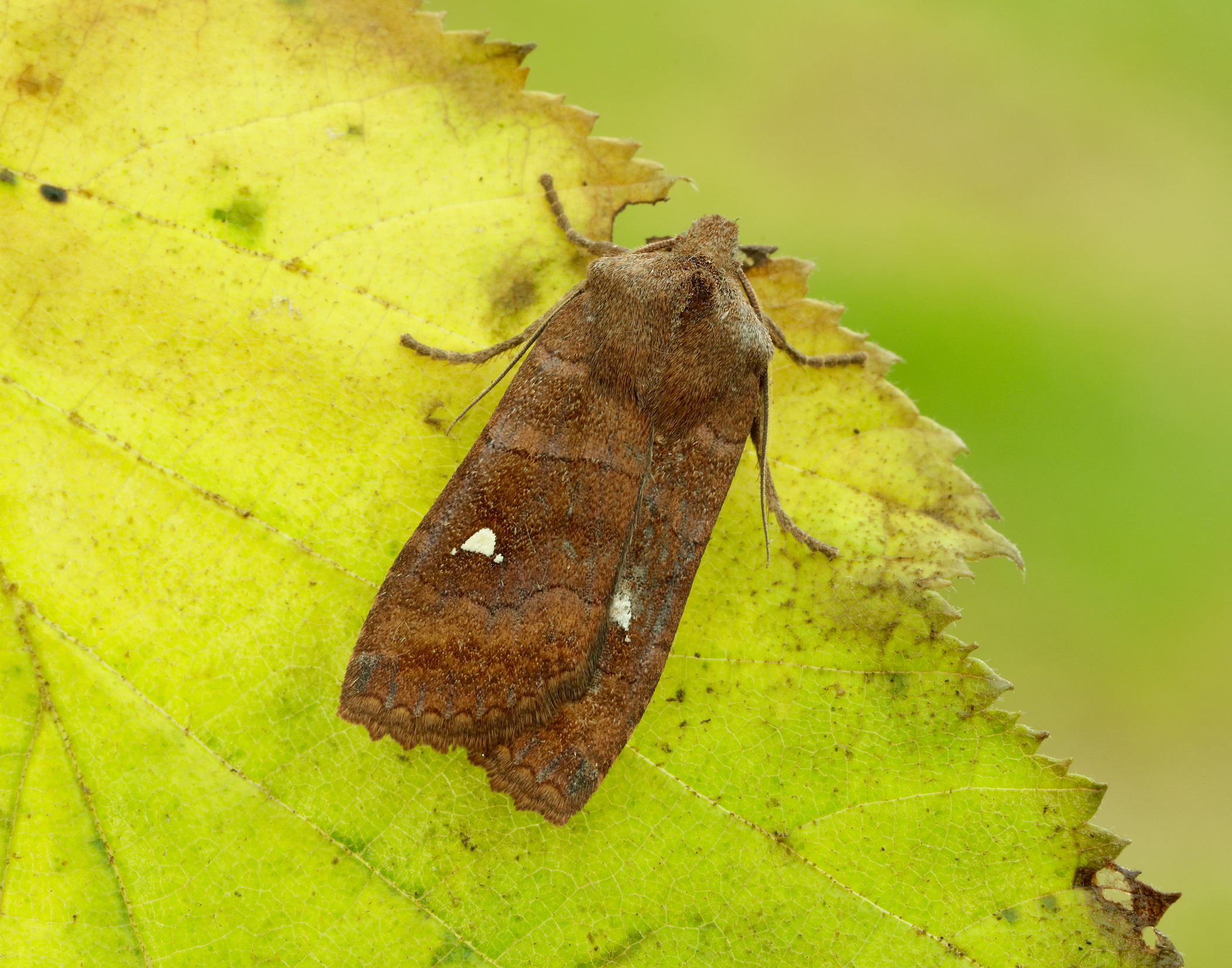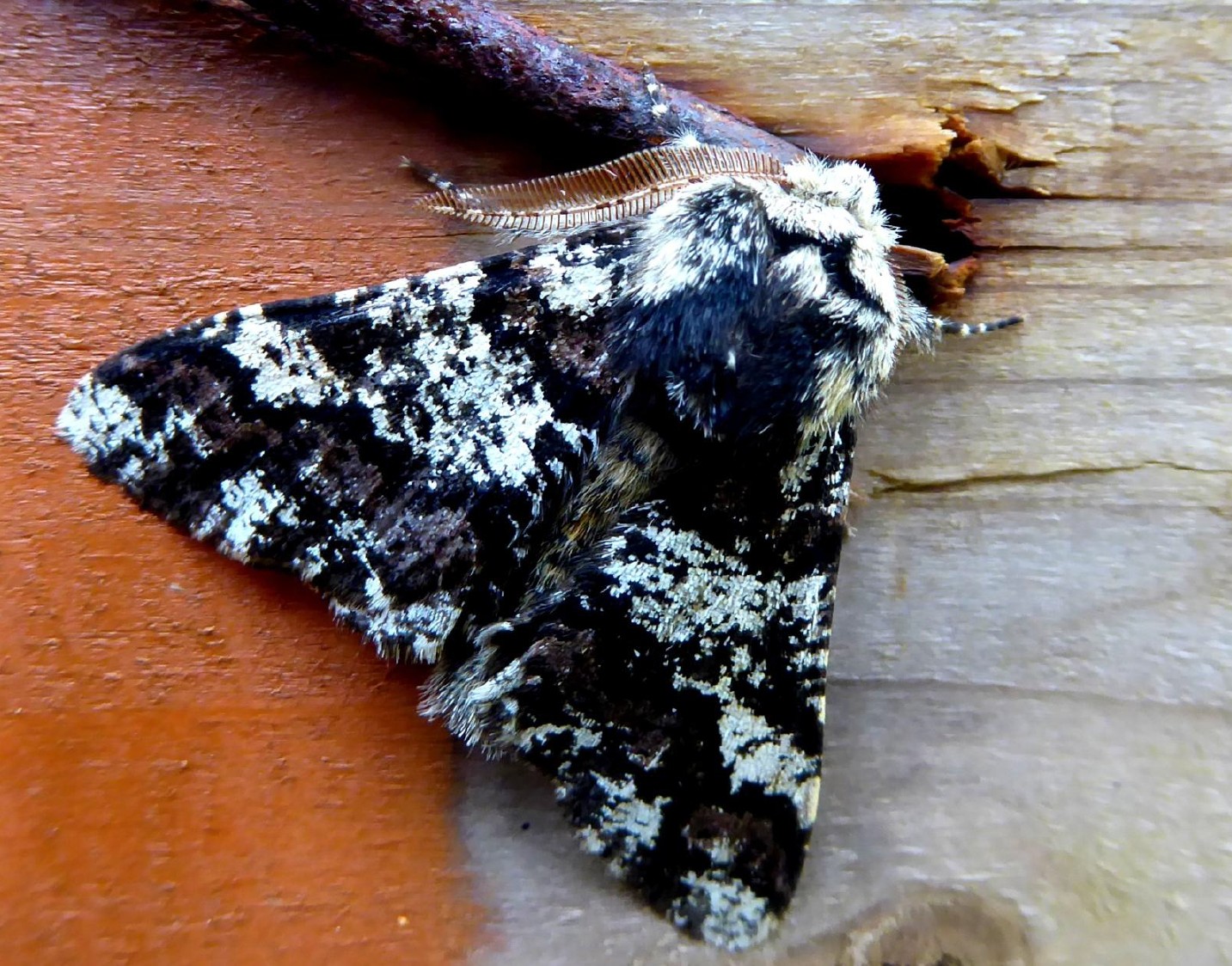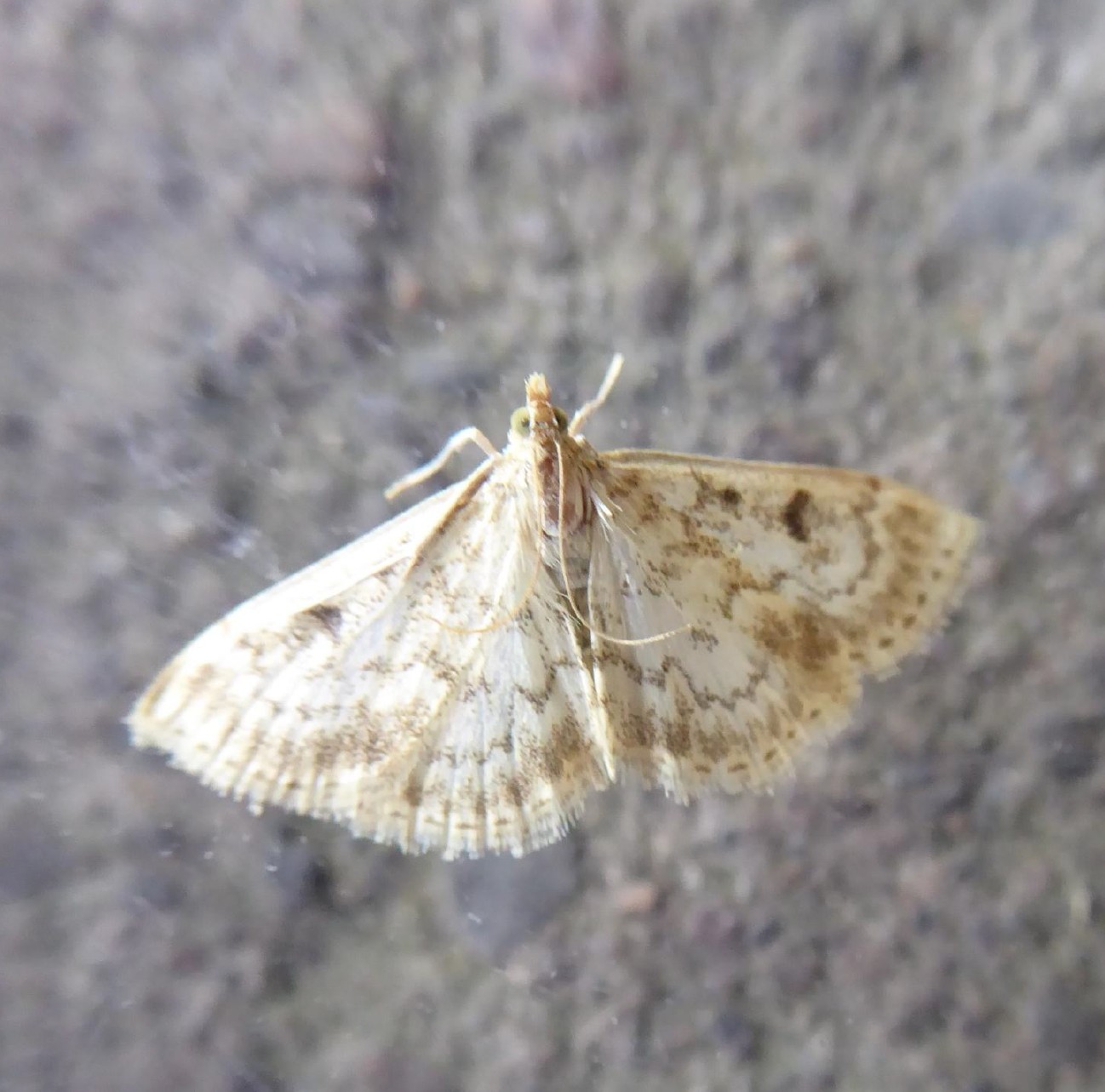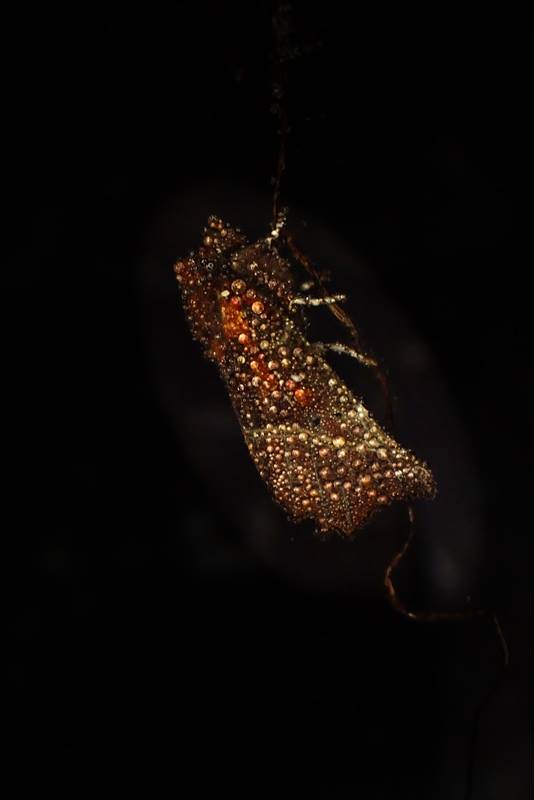Autumn is definitely here and the species of moths out and about at this time have changed dramatically. As the November moths are reaching their peak and the Winter moths are starting to come out in huge numbers there are still some large noctuids coming to light. One of these is the Satellite which is quite variable in colour but always a mix of ‘autumnal leaf’ colours. The obvious spot on each wing can be white, yellow (as here) or even dull red but it is the two small spots, or satellites, either side of the main spot which give the identity away.
Like most large moths at this time of year it feeds on ivy blossom, blackberries and similar fruits but it is unusual due to its odd form of hibernation. This species is exceptionally hardy and although it hides away in dead leaves during the worst of the weather it will take to the wing whenever there is a mild night coming to light or attracted by ‘sugaring’. In fact adult moths have been seen as early as August and then through to December with the greatest numbers in mid October. Some have even been seen in January then found in increasing numbers as Spring comes peaking in mid-March and lingering on into April i.e. flying for up to nine months of the year!
Both sexes over winter and they feed in spring on early blossoms such as willow catkins. They mate early in the year and the female lays her eggs singly on a range of trees such as birch, oak, willow, rowan and hazel as well as a number of other plants. The caterpillars are velvety dark brown or black with sparse, short white hairs. They have feint white lines along their bodies which are more distinct near the head and tail. The caterpillar spins together a daytime shelter from leaves and feeds at night. This includes eating other caterpillars, even of the same species, as a valuable protein source. The caterpillars hatching in April feed until early June and pupate underground.
This is a widespread and quite common moth in D&G with well over 350 records from all three vice-counties. It is found throughout the UK and in Scotland it extends up into Shetland. Many of the Scottish records are recent (since 2000) which might indicate a slight expansion in range or possibly just the recent intensive recording effort!




